Description
Donald Duck is a cartoon character created in 1934 at Walt Disney Productions. Donald is an anthropomorphic white duck with a yellow-orange bill, legs, and feet. He typically wears a sailor shirt and cap with a black or red bow tie. Donald is most famous for his semi-intelligible speech and his mischievous and temperamental personality. Along with his friend Mickey Mouse, Donald is one of the most popular Disney characters and was included in TV Guide’s list of the 50 greatest cartoon characters of all time in 2002. He has appeared in more films than any other Disney character, and is the most published comic book character in the world outside of the superhero genre.
Donald Duck rose to fame with his comedic roles in animated cartoons. Donald’s first appearance was in 1934 in The Wise Little Hen, but it was his second appearance in Orphan’s Benefit which introduced him as a temperamental comic foil to Mickey Mouse. Throughout the next two decades Donald appeared in over 150 theatrical films, several of which were recognized at the Academy Awards. In the 1930s he typically appeared as part of a comic trio with Mickey and Goofy, and was given his own film series in 1937 starting with Don Donald. These films introduced Donald’s love interest Daisy Duck and often included his three nephews Huey, Dewey, and Louie. After the 1956 film Chips Ahoy, Donald appeared primarily in educational films before eventually returning to theatrical animation in Mickey’s Christmas Carol (1983). His most recent appearance in a theatrical film was 1999’s Fantasia 2000. Donald has also appeared in direct-to-video features such as Mickey, Donald, Goofy: The Three Musketeers (2004), television series such as Mickey Mouse Clubhouse (2006–2013), and video games such as QuackShot (1991).
Beyond animation Donald is primarily known for his appearances in comics. Donald was most famously drawn by Al Taliaferro, Carl Barks, and Don Rosa. Barks in particular is credited for greatly expanding the “Donald Duck universe”, the world in which Donald lives, and creating many additional characters such as Donald’s rich uncle Scrooge McDuck. Donald has been a very popular character in Europe, particularly in Nordic countries where his weekly magazine Donald Duck & Co was the most popular comics publication from the 1950s to 2009. Disney comics’ fandom is sometimes referred to as “Donaldism”, a term which originated in Norway (Norwegian: Donaldisme).
The origins of Donald Duck’s name may have been inspired by Australian cricket legend Donald Bradman. In 1932 Bradman and the Australian team were touring North America and he made the news after being dismissed for a duck against New York West Indians. Walt Disney was in the process of creating a friend for Mickey Mouse when he possibly read about Bradman’s dismissal in the papers and decided to name the new character “Donald Duck”. Voice performer Clarence Nash auditioned for Walt Disney Studios when he learned that Disney was looking for people to create animal sounds for this cartoons. Disney was particularly impressed with Nash’s duck imitation and chose him to voice the new character. Besides, during that period Mickey Mouse had lost some of his edge since becoming a role model towards children, and so Disney wanted to create a character to portray some of the more negative character traits that could no longer bestow on Mickey. Disney came up with Donald’s iconic attributes including this short-temper and his sailor suit (based on ducks and sailors both being associated with water). While Dick Huemer and Art Babbit were first to animate Donald, Dick Lundy is credited for developing him as a character.
In 2005, Donald received his own star on the Hollywood Walk of Fame at 6840 Hollywood Blvd34 joining other fictional characters such as Mickey Mouse, Bugs Bunny, Woody Woodpecker, The Simpsons, Winnie the Pooh, Kermit the Frog, Big Bird, Godzilla and Snow White.
This image is from a Chip ‘N’ Dale short titled Out of Scale. Donald is having fun with his small train set but removes Chip and Dale’s tree after declaring it “out of scale”. As the chipmunks try to get their tree back, Donald chases them. The chipmunks make themselves comfy in a miniature house. Donald finds their scale fits with the house and torments them with weather changes. Chip and Dale retrieve their tree and make it fit to scale as a giant redwood tree. This episode is unique because it is a take on Walt Disney’s backyard railroad the Carolwood Pacific. The engine is modeled after the Lille Belle, his live steam engine and Canyonville was one of the towns the Carolwood Pacific Railroad serviced in Walt’s back yard.
This item may or may not show a tiny number on the image…please inspect the pictures carefully.
Frame is shrinkwrapped until time of purchase. Ships boxed with packing peanuts.
THE PERFECT GIFT!
Related products
-

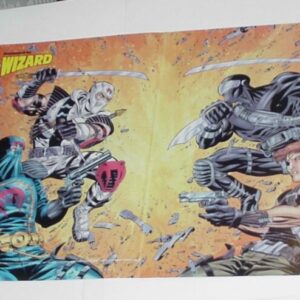
G.I. Joe Poster # 3 Cobra Commander Storm Shadow vs Snake Eyes and Billy by Mike Zeck
$34.99 Add to cart -
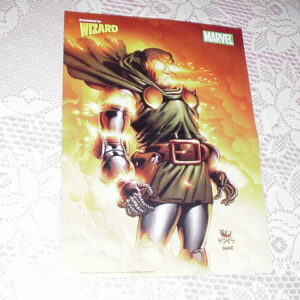
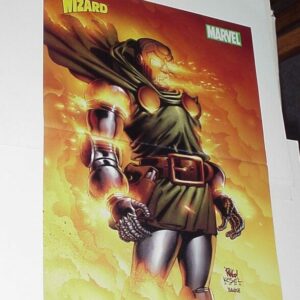
Doctor Doom Poster # 3 Triumphant by Mike Wieringo Fantastic Four 67
$34.99 Add to cart -
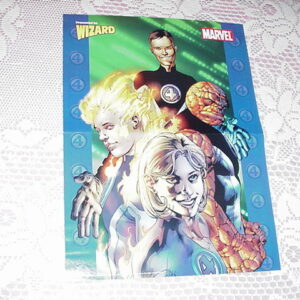

Ultimate Fantastic Four Poster # 1 Bryan Hitch Reed Johnny Sue Ben
$39.99 Add to cart -
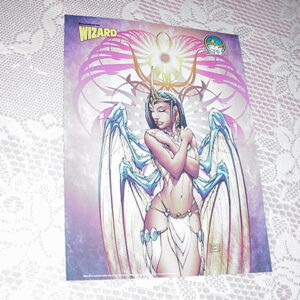

Soulfire Poster # 1 Grace by Michael Turner Fathom
$39.99 Add to cart






